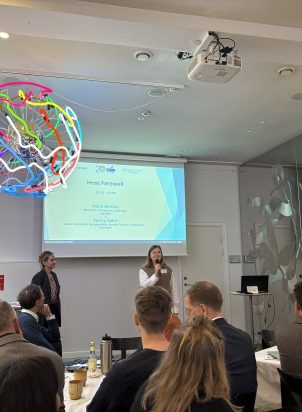As the Nordic Region faces new and complex geopolitical shifts, Nordic policymakers have deemed increased cross-border transport critical. At the recent Platform North conference, Anna Lundgren, Senior Research Fellow at Nordregio, shared research insights from the NORDINFRA project and the critical elements required for effective cross-border transport infrastructure planning.
Funded by the Swedish National Transport Administration and carried out between 2021 and 2023, the NORDINFRA project, a collaborative effort between Nordregio and Umeå University, aimed to identify the barriers and drivers of successful cross-border collaboration. The project focused on three connections (all at an early planning stage): the Helsingborg-Helsingør connection, the Stockholm-Oslo railway, and a multimodal line from Mo I Rana in Norway through Umeå in Sweden to Vasa in Finland.
Insights to enhance Nordic cross-border transport
First, a top-down approach is key. National-level political collaboration and support are essential for paving the way. The Nordic ministers on transport infrastructure have issued a declaration on cooperation and mandated the national transport administrations to deepen their cooperation, which are important steps in the right direction.
Secondly, a systems perspective is fundamental. Cross-border infrastructure planning transcends national boundaries, and considering the different modes of transport in that system is essential. To date, the Nordic Region lacks a comprehensive overview of the Nordic transport infrastructure system of transport flows, and the national transport plans.
Thirdly, it’s a question of costs and benefits. Economic figures and risk analyses are the foundation of sound decision-making. The results highlighted the need for joint analyses and models to estimate transport flows, evaluate risks and calculate costs and benefits.
Roadmap to a Nordic transport model
Anna Lundgren outlined best practices for policymakers and planners engaged in transport infrastructure planning: Acknowledge and navigate the complexities introduced by national borders and multiple governance levels; Ensure that national-level governments and relevant national authorities take the wheel; Include place-based actors and perspectives, and involve local and regional stakeholders and; Develop a platform for joint impact analyses and tools to assess cross-country Nordic transport flows.
The craftsmanship of cross-border planning
Effective cross-border collaboration extends beyond formal agreements—it requires an understanding of the varying administrative, legal, and operational frameworks across borders. To fully master the craftsmanship of cross-border planning, it is important to:
- Consider and manage diverse political and administrative processes across borders—This significantly impacts decision-making, time frames, planning, and, ultimately, the outcome.
- Build on strong relationships and establish new ones. Knowledge, including tacit knowledge, and skills in cross-border transport infrastructure planning are built through collaboration, and interpersonal relationships build trust over time.
- Formalise effective structures by, and include actors with the necessary mandates, relevant skills, and commitment to collaboration.
In conclusion, the journey towards a more integrated and efficient cross-border transport infrastructure in the Nordics has started. With continued national-level government commitment and mastering cross-border transport infrastructure planning, the Nordic Region can achieve a smoother, more efficient and robust transport system. Effective cross-border transport infrastructure planning is also key to achieving the Nordic Vision 2030 of becoming the world’s most integrated region.





